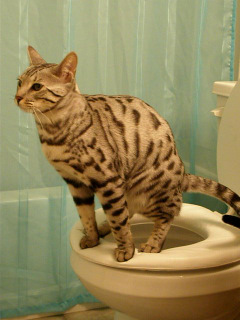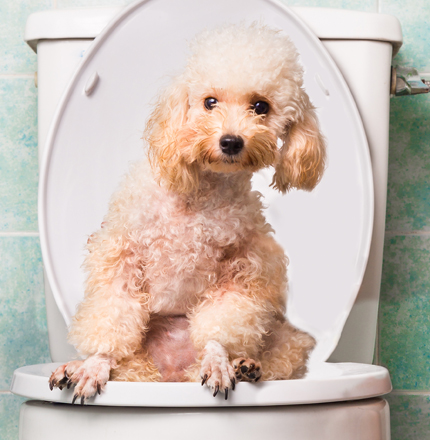Motives Why You Must Never Flush Animal Waste Down the Toilet
Motives Why You Must Never Flush Animal Waste Down the Toilet
Blog Article
Are you in search of critical info concerning Can You Flush Dog and Cat Poo Down the Toilet??

When it involves getting rid of waste, specifically animal waste, lots of people often resort to the hassle-free option of flushing it down the toilet. However, this apparently simple service can have major effects for the setting and public health. In this short article, we'll check out why flushing animal waste down the commode is a negative idea and give alternative approaches for appropriate disposal.
Intro
Correct waste disposal is vital for preserving ecological sustainability and public health. While it may seem safe to purge animal waste down the toilet, it can lead to numerous problems, both for the environment and human well-being.
Risks of flushing animal waste
Environmental impact
Purging animal waste introduces unsafe microorganisms and virus into rivers, which can negatively influence water communities. These microorganisms can infect water resources and injury aquatic life, interrupting delicate environments.
Public health problems
Pet waste contains dangerous germs such as E. coli and Salmonella, which can pose severe wellness threats to humans. Flushing animal waste down the bathroom can contaminate water materials, leading to the spread of diseases and infections.
Alternatives to flushing
Rather than purging animal waste down the commode, there are a number of different disposal methods that are a lot more eco-friendly and sanitary.
Composting
Composting animal waste is an environment-friendly method to deal with it. By composting, organic matter is broken down right into nutrient-rich dirt, which can be used to fertilize gardens and plants.
Garbage dump disposal
Disposing of animal waste in a garbage dump is an additional choice. While not as eco-friendly as composting, it is a safer option to flushing, as it stops the contamination of water resources.
Family pet waste disposal systems
There are specialized pet garbage disposal systems available that safely and hygienically throw away pet waste. These systems commonly use enzymes to break down waste and get rid of smells.
Steps to correct animal waste disposal
To make certain proper disposal of animal waste, comply with these actions:
Scooping and getting waste
Frequently scoop and bag pet waste utilizing naturally degradable bags. This stops waste from polluting the environment.
Utilizing marked waste bins
Dispose of bagged pet waste in designated waste containers, such as compost bins or landfill containers. Avoid flushing it down the commode at all expenses.
Cleaning up litter boxes and pet areas routinely
Regularly tidy litter boxes and pet areas to avoid the buildup of waste and microorganisms. Use pet-safe cleansing products to preserve hygiene.
Advantages of proper disposal techniques
Taking on correct disposal techniques for pet waste supplies several benefits:
Reduced environmental pollution
Proper disposal methods minimize the risk of environmental pollution, safeguarding rivers and environments from contamination
Reduced threat of water contamination.
By avoiding flushing animal waste down the commode, the threat of water contamination is dramatically minimized, protecting public health.
Enhanced sanitation and hygiene
Proper disposal techniques promote much better sanitation and health, creating a more secure setting for both human beings and pets.
Final thought
In conclusion, purging animal waste down the toilet is dangerous to the environment and public health. By taking on alternate disposal methods and complying with correct waste management practices, we can lessen the unfavorable influence of pet waste and contribute to a cleaner, healthier world.
What To Do With Dog Poo – The Do's And Don'ts Of Disposing Of Faeces
Dog poo bins
Some councils provide dedicated dog waste bins in popular dog-walking areas that can take dog poo that has been bagged but you can legally dispose of dog waste in any public litter bin, as long as it is securely bagged. This also applies to your wheelie bin at home.
Do not flush
Water companies do not recommend flushing dog faeces down the toilet because certain parasites can survive the water processing treatment and are potentially harmful to humans. You should also never consider flushing dog poo that has been bagged down the toilet as the bags will not break down and instead create severe blockages in the sewage system.
In the woods
The Forestry Commission promotes a ‘stick and flick’ method for dealing with waste in the woods. This means finding a stick and using it to flick any poo from off the path so that it is out of the way of other walkers. You could also bury it as long as it is not in an area where there might be livestock.
Livestock
Parasites found in dog poo can be transmitted to livestock if they inadvertently eat infected faeces that has been left on grazing land. This could result in the death of sheep or abortion in cattle so you should always make sure you pick up your dog’s waste in fields where livestock could be present.

Regularly tidy litter boxes and pet areas to avoid the buildup of waste and microorganisms. Use pet-safe cleansing products to preserve hygiene.
Advantages of proper disposal techniques
Taking on correct disposal techniques for pet waste supplies several benefits:
Reduced environmental pollution
Proper disposal methods minimize the risk of environmental pollution, safeguarding rivers and environments from contamination
Reduced threat of water contamination.
By avoiding flushing animal waste down the commode, the threat of water contamination is dramatically minimized, protecting public health.
Enhanced sanitation and hygiene
Proper disposal techniques promote much better sanitation and health, creating a more secure setting for both human beings and pets.
Final thought
In conclusion, purging animal waste down the toilet is dangerous to the environment and public health. By taking on alternate disposal methods and complying with correct waste management practices, we can lessen the unfavorable influence of pet waste and contribute to a cleaner, healthier world.
What To Do With Dog Poo – The Do's And Don'ts Of Disposing Of Faeces
Dog poo bins
Some councils provide dedicated dog waste bins in popular dog-walking areas that can take dog poo that has been bagged but you can legally dispose of dog waste in any public litter bin, as long as it is securely bagged. This also applies to your wheelie bin at home.
Do not flush
Water companies do not recommend flushing dog faeces down the toilet because certain parasites can survive the water processing treatment and are potentially harmful to humans. You should also never consider flushing dog poo that has been bagged down the toilet as the bags will not break down and instead create severe blockages in the sewage system.
In the woods
The Forestry Commission promotes a ‘stick and flick’ method for dealing with waste in the woods. This means finding a stick and using it to flick any poo from off the path so that it is out of the way of other walkers. You could also bury it as long as it is not in an area where there might be livestock.
Livestock
Parasites found in dog poo can be transmitted to livestock if they inadvertently eat infected faeces that has been left on grazing land. This could result in the death of sheep or abortion in cattle so you should always make sure you pick up your dog’s waste in fields where livestock could be present.

I ran across that blog entry about Don't Flush Your Pets Poo Down The Loo, Vet Warns when looking around the internet. Sharing is good. You never know, you may very well be helping someone out. Thanks for taking the time to read it.
Call Today Report this page